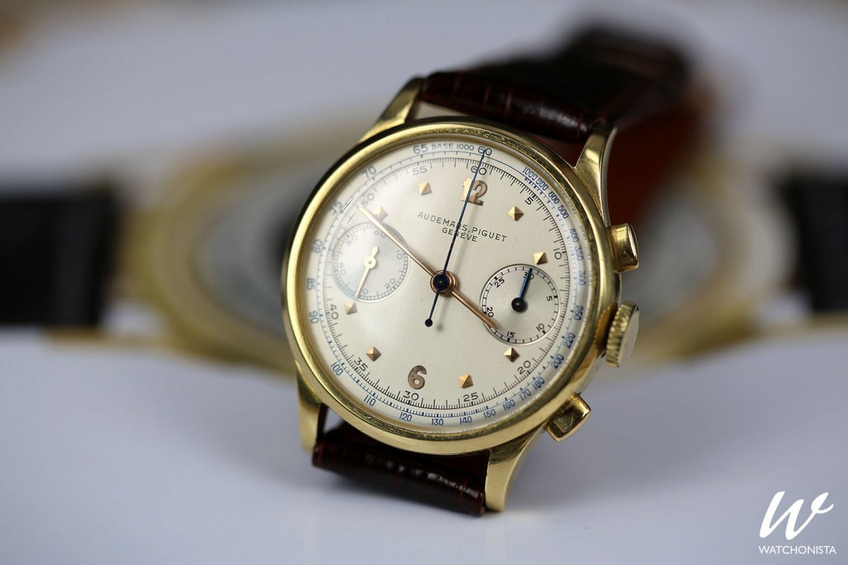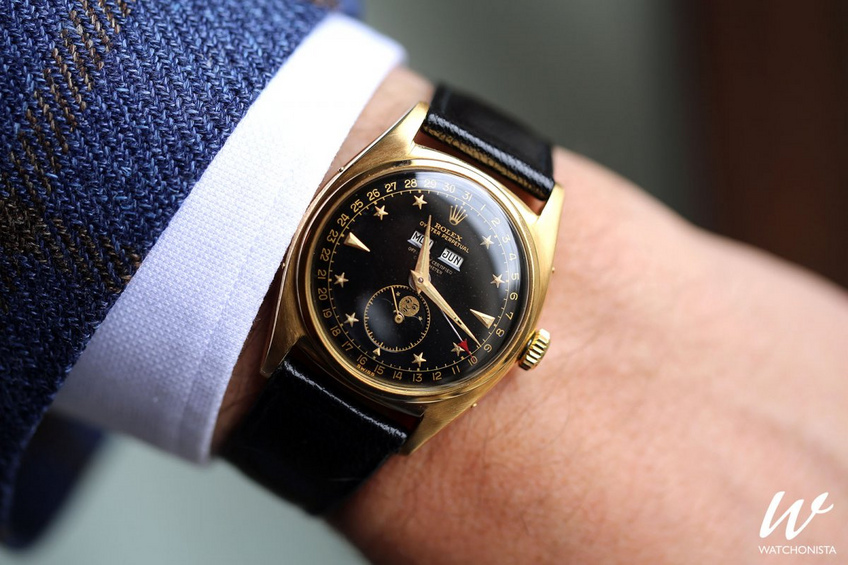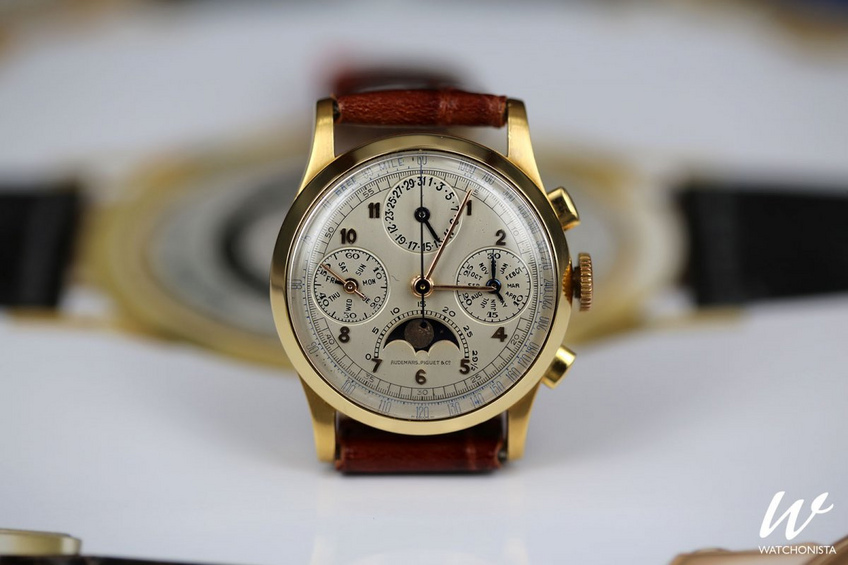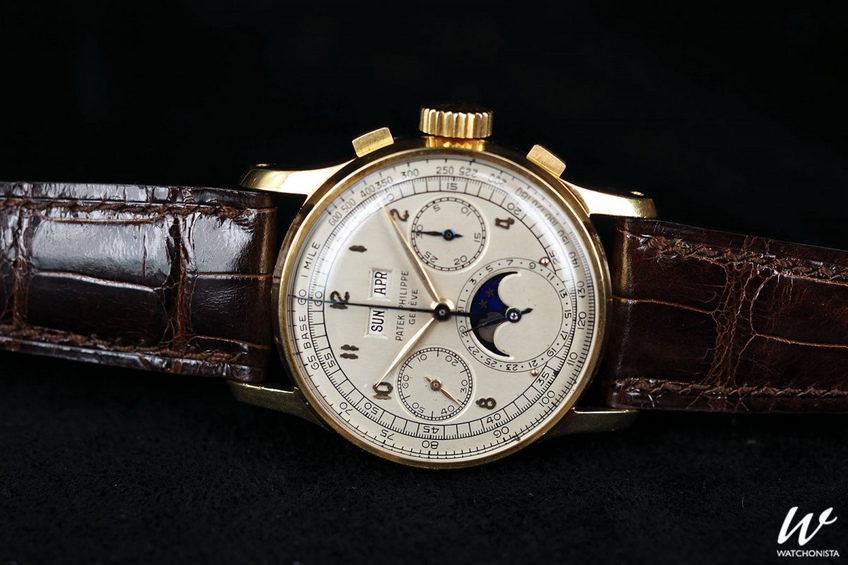

Did you say Vintage?
The term 'vintage' appears to be invading the entire watchmaking world and yet it covers many very different realities from the authentically 'vintage' pre-owned, pre-loved watch to the modern, so-called 'neo-vintage' model inspired by the past, not forgetting the timeless classics with an eternal vintage flavour. But there is a meaning behind the term!
In the context of current-day watchmaking, 2017 is often referred to as the "year of vintage". Today, the term is used mainly in connection with clothing and accessories, jewellery, furniture and automobiles.

Depending on the context, in watchmaking it refers not only to timeless models, such as the Cartier Tank, Jaeger-LeCoultre's Reverso and the Royal Oak by Audemars Piguet (to name but a few), or second-hand or new versions of old classics 30, 50, and sometimes 100 years old, but also to more or less faithful re-editions and contemporary creations. The latter, referred to as retro or neo-retro, were designed to recall or resemble old objects by means of artificial ageing. To conclude, the term would therefore appear to be a generic concept, although our studies have revealed a converse reality and indeed other aspects beyond the field of semantics.
Forming part of the oenologist's vocabulary, the term vintage was originally used to refer to the age of a quality wine or the year of harvesting the grapes that went into its making. Gradually, it extended to fashion to describe any item of clothing or accessory made at least thirty years ago and pinpointing the time at which it was made. This definition was then gradually enriched by its association with remarkable moments in the history of clothing, furniture, automobiles and other industries.

Rolex Ref. 6085 "The Dragon"
Vintage, neo-vintageand other watches
A genuine vintage watch is a pre-owned object generally manufactured between 1945 and 1980, a period covering several creative movements in the twentieth century and therefore different styles. Each model is a classic that has withstood the test of time without becoming outmoded. Its past may be read in the varying degrees of wear and tear. Such a timepiece is considered authentic in respect to the brand, as well as the techniques and materials used. It can recall a particular moment in the measurement of time, sporting achievements or epic tales of science. These wearable pieces form part of our cultural heritage and imply a certain level of knowledge on the part of their owner. They are sold through specialists and auction houses.
While retro fashion consists in wearing authentic items from the past, neo-retro is used in reference to contemporary creations designed to resemble or recall other older models. This notion is also found in the furniture industry. For example, an armchair dating from the Louis XVI era could only have been made somewhere between 1774 and 1792, whereas its counterpart in the Louis XVI style may have surfaced anywhere between the late 18th century and today.

In the watchmaking industry, the term applies mainly to re-editions of successful models, whose original aesthetic codes from the period are reworked and reinterpreted. Such re-editions are made necessary by the relative rarity of originals in good condition. However, many examples have been repolished, thereby losing some of their original surface relief, much to the displeasure of some purists.
Moreover, although a broad clientele is drawn to these period designs, it is nonetheless also captivated by the performances and dimensions of contemporary timepieces. The ensuing "contemporanization" is achieved through the incorporation of modern characteristics: watchcases that are water-resistant to the stated dimensions and fitted with sapphire crystals, present-day mechanisms with automatic winding and equipped with a shock damping device.

The neo-retro watch is therefore the result of a fine balance between yesterday's aesthetics to lend a hallmark signature and today's technology. Inspiring without compromising is the key to the success of any re-edition, a fact that is not totally incompatible with creativity. In fact, neo-retrowatches appear to have in their DNA a number of symbolic virtues that provide credible insights into history and that can be translated differently.

Retro-futuristic watches, for example, respond to the desire of enthusiasts wishing to link the past to the future. The extravagant features of past times were attenuated by the use of purely avant-garde elements.
Vintage, a recent phenomenon?
The interest in timepieces dubbed vintage for some, or neo-retro for others, is not a new phenomenon. Already, in the 19th century, the so-called fantasy watch adopted the cases in the form of animals and insects, fish and shellfish, flowers and fruit that had been so popular two hundred years earlier. Equipped with ingenious 19th century mechanisms, they would likewise have been called vintage if the term had been in use. The same applied to Napoleon III furniture, which also adopted many styles from previous years either wholesale or in a reworked form.
Omega Chronograph
Closer to our times, the mechanical watch, albeit overtaken by technology, once again went into production after the 1980s, either continuing in the same vein, or adopting a revamped aesthetic driven by talented designers specialised in watchmaking, with Gérald Genta leading the pack.
The Rolex Submariner falls under this second approach. Housed in a case inspired by the celebrated 1926 Oyster, it first appeared in 1959 before it was adopted by James Bond. In 1981, it was replaced by a version that was the ancestor of the current model and technically superior. Its aesthetic codes remained fundamentally unchanged, but were discreetly updated. The Submariner, therefore, like other emblematic watches, was a nod to the timeless timepieces, which blurred the boundaries between vintage and neo-retro.
Rolex Cosmograph Daytona "Paul Newman John Player"
A protest movement... and a nostalgic nod to the past
The repeat success of the neo-retro watch since the early 2000s is the result of a rebellion against everything that moves too fast in life. It displays a certain nostalgia for less oppressive times, a time when life was perceived, rightly or wrongly, as less complicated.
The enthusiasm forvintage models illustrates the search for assurances that are found in contemporary watches with their uncomplicated back-stories and the disillusionment with the watchmaking extravagances of the 2000s. The latter manifested itself in a flurry of novel inventions, complications often difficult to understand for the layperson, the search for precision to within the nearest thousandth of a second, and other performances that had nothing to do with mechanics. This race for innovation took its toll on prices, many of which appeared to be unjustifiably inflated and largely unaffordable for most enthusiasts.
Patek Philippe "Staybrite" Chronograph
The terms vintage and neo-retro also express a longing to return to human values, the need to be advised by a watchmaker and the desire for interaction among enthusiasts. At once easy-to-wear and more affordable, these models make it possible to break free from fashion constraints. They are a symbol of "self-indulgence". Their subtle beauty replaces ostentation. The sobriety of their designs and the reduced dimensions of watchcases after 2012 marked a return to the watchmaking basics, a vector of timeless values.
Heuer Autavia Chronograph
What will the vintage models of 2050 look like?
In these politically and commercially troubled times, vintage and neo-retro models represent the best of the present and the most aesthetic of the past. They enable the watchmaking brands to minimise commercial risks while offering them the manufacturing volumes they need. Bereft of any grand complications, requiring no costly research studies and technical developments, they consolidate the entry-level range to the collections. However, not all models are worth updating and only the most creative new designs, especially where time-telling aesthetics and finishings are concerned, will serve as the basis for the 2050 vintage.


